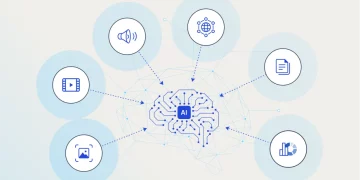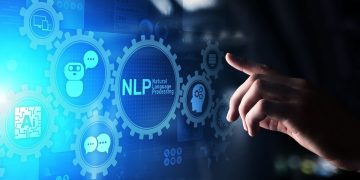In 2025, the artificial intelligence (AI) sector is undergoing a historic consolidation phase. The mergers and acquisitions (M&A) taking place are not simply business transactions—they are strategic maneuvers that reveal the direction of the global AI market. Behind each acquisition lies a story of competition for talent, compute, proprietary data, and platform dominance. In many ways, M&A activity is shaping the future of AI faster than research breakthroughs or regulatory policy.
This article explores the key trends driving the AI M&A boom, the strategic logic behind major deals, and the emerging opportunities for companies, startups, governments, and investors in a rapidly consolidating AI ecosystem.
1. Full-Stack AI Control: Why Vertical Integration Is Now Essential
One of the most significant trends in AI acquisitions is the aggressive pursuit of vertical integration. Companies are no longer content with building models or hosting tools—they want to own the full AI value chain. This means controlling:
- Infrastructure (compute, storage, networking)
- Foundation models (language, vision, multimodal)
- Middleware and orchestration layers (APIs, agents, toolchains)
- End-user applications (assistants, copilots, productivity tools)
Notable examples include:
- Microsoft’s acquisition of Inflection AI, which brought top-tier LLM capabilities in-house and reduced its reliance solely on OpenAI.
- Amazon’s purchase of Hugging Face, which expanded its Bedrock platform and connected Amazon with the open-source developer ecosystem.
- Salesforce acquiring conversational AI startups to enhance Einstein GPT and offer more tailored solutions to enterprise clients.
Owning every layer—from chips to applications—gives tech giants the ability to optimize performance, reduce external dependencies, and generate recurring revenue through subscription-based platforms. In this competitive climate, controlling the stack means controlling the future.
2. Talent Is the True Scarcity: Acqui-Hiring Elite Research Labs
While technology and products matter, many AI acquisitions are primarily about acquiring human capital. The race for AI talent has become so intense that acquiring a startup is often the fastest and most reliable way to onboard entire teams of top-tier researchers, engineers, and model designers.
Examples of this trend include:
- Google DeepMind’s strategic acquisitions of smaller AI safety and alignment-focused startups, integrating their teams into research on scalable oversight.
- Meta’s buyouts of European cognitive science labs, intended to bring symbolic reasoning and neuroscience-inspired architectures into LLaMA’s development pipeline.
- Apple’s stealth acquisitions of privacy-preserving ML startups, used to strengthen on-device AI performance and intelligence on iPhones and Vision Pro devices.
AI talent is unevenly distributed globally, and as the field matures, highly specialized teams (especially in model compression, interpretability, synthetic data, and agent systems) are becoming priceless strategic assets.
3. The Infrastructure Race: Compute, Chips, and Cloud Consolidation
Compute is the new oil. The insatiable demand for GPU clusters, AI-optimized data centers, and specialized chips has led to an arms race in the AI infrastructure layer. As a result, M&A activity has exploded across semiconductors, cloud providers, and model-serving platforms.
Key developments:
- NVIDIA has acquired multiple AI chip design startups focused on low-power inference and edge deployment, extending its lead in verticalized AI stacks.
- AMD and Intel are responding by acquiring companies specializing in AI acceleration at the edge, including startups working on neural processing units (NPUs) and analog computing.
- Hyperscale cloud providers (AWS, Google Cloud, Azure) are buying out smaller GPU hosting companies and AI inference engines to offer more integrated and cost-effective model deployment.
Ownership of compute infrastructure is now a strategic necessity. Companies that control silicon and runtime environments are better positioned to attract developers, price their APIs competitively, and maintain performance advantages.
4. Enterprise AI Is the Next Battleground
The enterprise market is proving to be one of the most valuable arenas for generative AI. As businesses seek to integrate LLMs into customer service, internal knowledge management, compliance, and workflow automation, demand is rising for safe, fine-tuned, and reliable AI platforms.
Recent enterprise-focused acquisitions include:
- SAP’s acquisitions of predictive maintenance and industrial AI startups for its manufacturing and supply chain modules.
- Oracle’s purchases of AI governance and audit tooling firms to strengthen regulatory readiness in healthcare and finance.
- ServiceNow’s investment in small agents and workflow automation startups, allowing it to create modular AI assistants for IT and HR operations.
Enterprise AI is not just about large language models—it’s about integration, control, compliance, and cost. This is leading to a wave of acquisitions focused on packaging AI as business-ready infrastructure, often with industry-specific fine-tuning and data pipelines included.

5. The Fusion of Open Source and Commercial Ecosystems
An unexpected M&A hotspot is the intersection of open-source AI and commercial services. As open models like LLaMA, Falcon, and Mistral gain traction, companies are racing to build ecosystems around them.
Key signals:
- Databricks’ acquisition of MosaicML exemplifies how cloud-native platforms are absorbing model providers to offer unified training and inference pipelines.
- Red Hat’s moves to integrate LLM-serving frameworks into its Linux stack for enterprise environments.
- Hugging Face’s partnerships and acquisition offers reflect its centrality in the open-source developer ecosystem, even as it resists full acquisition.
This reflects a deeper trend: the commoditization of models, and the growing importance of tools, orchestration, and deployment layers. M&A here focuses on building bridges between raw open-source innovation and enterprise-grade reliability.
6. National AI Sovereignty and Regional Consolidation
AI geopolitics is becoming increasingly visible in M&A behavior. Several governments and state-backed funds are now involved in AI acquisitions—either directly or through regional tech champions:
- Middle Eastern sovereign wealth funds are acquiring AI infrastructure startups in Europe and investing heavily in foundation models and compute centers.
- China’s consolidation of its domestic AI sector involves major players like Alibaba, Tencent, and ByteDance acquiring smaller labs to comply with government directives and AI content rules.
- European tech alliances are forming to acquire and protect AI talent and intellectual property in light of the EU AI Act and growing concern over dependency on U.S. models.
The push toward regional AI self-sufficiency—whether for reasons of national security, regulatory alignment, or data protection—is creating localized M&A clusters. For example, Paris, Dubai, Singapore, and Tel Aviv are emerging as regional AI hubs.
7. Strategic Opportunities Amid the Consolidation
This surge in AI M&A presents multiple new opportunities:
- For startups: Building niche, high-IP-value companies in alignment, agent frameworks, synthetic data, or domain-specific AI makes them prime targets for acquisition.
- For investors: M&A exit paths are now shorter, leading to more build-to-buy strategies, especially in pre-seed and seed stages.
- For enterprises: Companies with limited AI capacity can accelerate adoption by acquiring startups directly, bypassing long implementation cycles.
- For governments: Supporting local AI M&A and providing capital for strategic acquisitions can help build sovereign AI capacity and reduce dependence on foreign providers.
There’s also a hidden opportunity in post-merger integration tools, including platforms for model fusion, data harmonization, and cross-model deployment management.
Conclusion: Consolidation Is the New Innovation
The current M&A wave in AI isn’t just a symptom of market maturity—it is an engine of transformation. By acquiring strategically, companies aren’t just expanding their capabilities—they’re reshaping the structure of the AI industry itself.
In this environment, innovation doesn’t only happen in the lab—it happens in boardrooms, investor decks, and negotiation rooms. The winners of the next phase of AI won’t be defined solely by who builds the best models, but by who controls the infrastructure, owns the data, integrates talent, and scales applications across industries.
In AI, consolidation is no longer a byproduct of success—it is success.











































